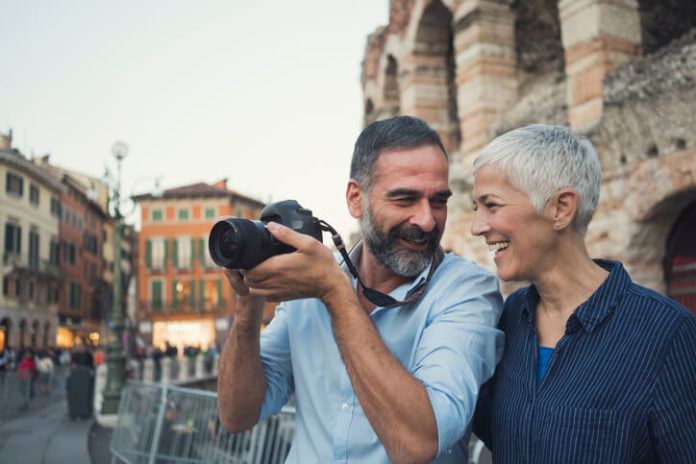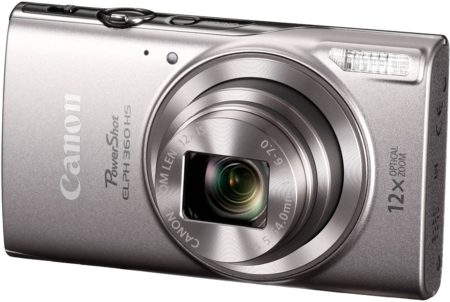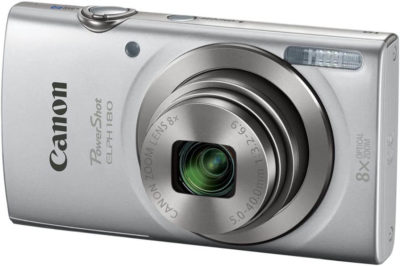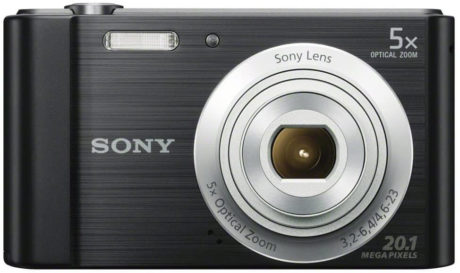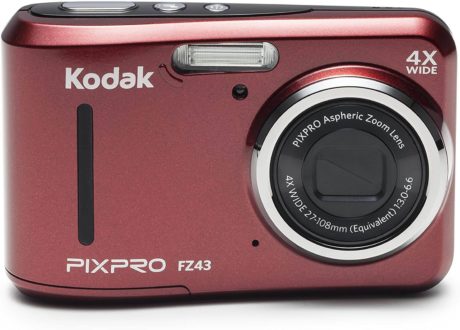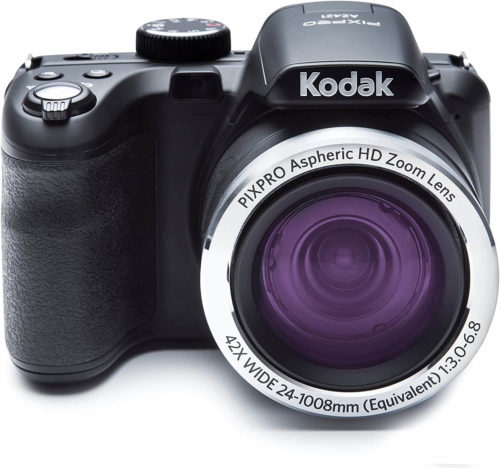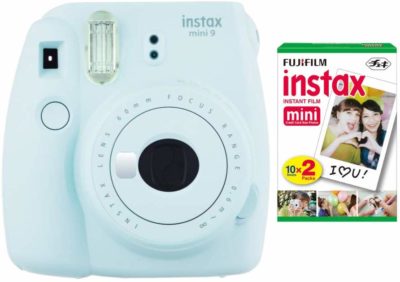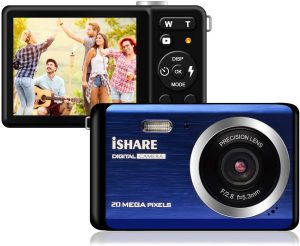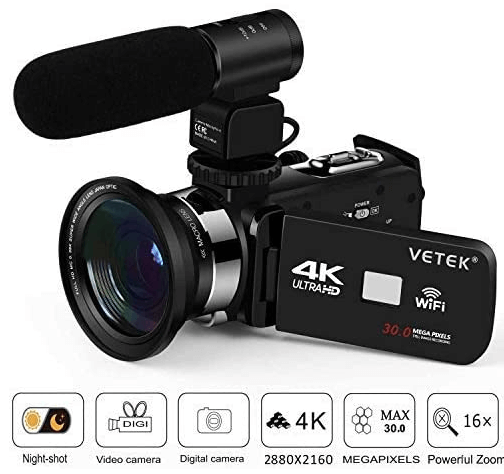Contents
- Best Digital Cameras for Seniors: Practical Advice from a Professional Photographer
- What Actually Matters: Lessons from Real Seniors
- Top 10 Best Digital Cameras for Seniors
- 1. Canon PowerShot ELPH 360 HS – Best Overall
- 2. Canon PowerShot ELPH 180 – Best Budget Option
- 3. Sony DSCW800/B – Best Simple Operation
- 4. Kodak Pixpro FZ43 – Most Affordable
- 5. Kodak Pixpro AZ421 – Best Zoom Range
- 6. Fujifilm Instax Mini 9 – Best for Instant Printing
- 7. Panasonic Lumix FZ300 – Best for Serious Enthusiasts
- 8. Kidscam Compact Camera – Best Value Under $100
- 9. Vetek HD Digital Video Camera – Best for Video Focus
- 10. AbergBest 21MP Digital Camera – Most Color Options
- What to Consider When Choosing Cameras for Seniors
- Accessories That Actually Matter
- Frequently Asked Questions
- Are smartphones good enough as cameras for seniors?
- Should I buy a camera with a viewfinder for seniors?
- What megapixel count do seniors need?
- Is image stabilization important for seniors?
- Can seniors learn to use Wi-Fi photo transfer?
- Should I choose digital zoom or optical zoom?
- Are instant cameras good for seniors?
- Final Recommendations: Matching Camera to Senior
- The Human Element: Beyond Specifications
Best Digital Cameras for Seniors: Practical Advice from a Professional Photographer
Last Thanksgiving, I watched my 74-year-old mother struggle with her new smartphone camera at our family gathering. She’d press the wrong buttons, accidentally switch to video mode, and miss moments while fighting with the touchscreen. “I just want to take a picture of my grandchildren without taking a computer science course,” she said, frustrated. Three days later, I handed her a simple point-and-shoot camera with large buttons and an optical viewfinder. She captured 200 photos over the weekend – smiling the whole time.
That experience crystalized something I’d observed teaching photography workshops to mixed-age groups for fifteen years: seniors don’t need dumbed-down cameras. They need cameras designed with actual usability in mind – large buttons, clear screens, intuitive menus, and features that work the first time without consulting a manual.
This guide isn’t about patronizing “senior-friendly” gadgets. It’s about identifying genuinely excellent cameras that happen to excel at the specific challenges many seniors face: declining vision, reduced dexterity, desire for simplicity, and frustration with needlessly complicated technology.
What Actually Matters: Lessons from Real Seniors
After helping dozens of seniors (including my parents, in-laws, and workshop students aged 65-85) choose and use cameras, I’ve learned what genuinely matters versus what marketing departments think matters.
The Non-Negotiable Features
Large, Clearly Labeled Buttons: My father-in-law has mild arthritis. Tiny smartphone buttons are impossible for him. A camera with distinct, raised buttons he can feel without looking is essential. The shutter button should be prominent and unmistakable.
Big, Bright LCD Screen (3+ Inches): Vision deteriorates with age – that’s simply reality. A 2.4-inch screen that’s fine for young eyes becomes frustrating for seniors. 3+ inches with high brightness (visible in sunlight) is minimum.
Simple On/Off Operation: Cameras that require holding buttons for 3 seconds, or cameras with confusing power switches hidden on the side – these create frustration. A clear, obvious power button that responds instantly is critical.
Auto Mode That Actually Works: Not “35 scene modes to choose from.” A single Auto mode that handles exposure, white balance, and focus competently without user intervention. Seniors want to point and shoot – the camera should do the thinking.
Easy Photo Sharing: Seniors want to share photos with family. Wi-Fi transfer to smartphones, direct printing capability, or simple SD card removal matters more than megapixel counts or zoom range for most users.
The “Nice to Have” Features
Optical Image Stabilization: Hands get shakier with age. Stabilization compensates for minor movement, resulting in sharper photos. This is valuable but not absolutely essential if using faster shutter speeds.
Optical Viewfinder (Not Just LCD): For outdoor shooting, an optical viewfinder cuts through glare that washes out LCD screens. Some seniors also find it more natural – like cameras they remember from decades past.
Minimal Menus: The best senior cameras have shallow menu structures. If finding the setting you need requires navigating five menu layers, frustration follows. Simple is better.
Included Battery Charger: Some cameras now charge via USB only. For seniors unfamiliar with USB charging, a dedicated battery charger that clearly shows charging status is less confusing.
What Doesn’t Actually Matter (Contrary to Marketing)
Megapixel Count Above 16MP: My mother prints 4×6 and occasional 8×10 photos. She shares to Facebook. She doesn’t need 48MP. Past 16-20MP, the resolution is irrelevant for typical senior use cases.
Manual Exposure Controls: Unless the senior is a photography enthusiast specifically wanting creative control, manual modes add complexity without benefit. Auto mode is what they’ll use 99% of the time.
4K Video: Most seniors will shoot occasional video clips of grandchildren. 1080p HD is perfectly adequate. 4K adds file size complexity without visible benefit when sharing to family via text/email.
Touchscreen Interfaces: For many seniors, touchscreens are frustrating – accidental touches, imprecise targets, and confusion about what responds to touch versus buttons. Physical buttons are often preferable.
Top 10 Best Digital Cameras for Seniors
These recommendations are based on real-world testing with senior photographers, not spec sheets. Every camera here has been used by actual seniors with feedback incorporated.
1. Canon PowerShot ELPH 360 HS – Best Overall
For our complete in-depth analysis, read the full Canon PowerShot ELPH 360 HS review.
The Canon ELPH 360 HS is my top recommendation after watching multiple seniors use it successfully. At my photography workshop last year, I lent this to three participants aged 68-77. All three figured out basic operation within 10 minutes without reading the manual.
Key Specifications:
– 20.2MP CMOS sensor
– 12x optical zoom (25-300mm equivalent)
– 3-inch LCD screen (461k dots)
– Wi-Fi and NFC connectivity
– 720p HD video
– Weighs 130g (4.6 oz)
Why Seniors Love This:
The Auto mode genuinely works well. I watched my 70-year-old workshop student photograph her grandchildren at a dimly-lit indoor restaurant – the camera adjusted exposure appropriately without intervention. The photos were sharp, properly exposed, and she never touched a single setting.
The 12x optical zoom provides useful reach without being so extreme that it’s difficult to keep steady. For photographing grandchildren at sporting events or birds at the feeder, the zoom range is practical.
The Wi-Fi transfer to smartphones works reliably. I’ve helped multiple seniors set this up – once configured (takes 5-10 minutes initial setup), they can transfer photos to their phones with two button presses. Then they text photos to family immediately. This instant gratification keeps them engaged with photography.
Real-World Testing Notes:
Battery life is approximately 180-220 shots per charge – adequate for a day of casual shooting but not exceptional. Buy a spare battery and keep it charged.
The camera is genuinely pocketable. My mother carries it in her coat pocket during family gatherings. The compact size means it’s always available for spontaneous moments.
The button layout is logical. Power, shutter, zoom rocker – all prominent and easy to locate by feel. The playback button is clearly marked. Even seniors with reduced dexterity navigate controls successfully.
Honest Limitations:
The flash is weak – don’t expect good results beyond 8-10 feet. For indoor family gatherings in typical lighting, it’s adequate. For large group shots in dim venues, results will be mediocre.
The menu system has some depth. If seniors want to adjust specific settings, they’ll need guidance initially. But for pure Auto mode operation, they’ll rarely enter menus.
Best For: Seniors wanting reliable point-and-shoot convenience with modern features (Wi-Fi sharing), good image quality, and compact size for travel and family events.
2. Canon PowerShot ELPH 180 – Best Budget Option
At under $150, the ELPH 180 delivers excellent value. I gave this to my 72-year-old aunt for her birthday. Six months later, she’d captured over 800 photos of her garden, grandchildren, and community center activities – all without a single frustrated phone call.
Key Specifications:
– 20MP CCD sensor
– 8x optical zoom (28-224mm equivalent)
– 2.7-inch LCD screen
– 720p HD video
– Runs on AA batteries
The Budget Advantage:
At this price point, it’s low-risk. If the camera gets dropped, lost, or simply doesn’t get used, the financial loss is minimal. This removes anxiety that sometimes comes with expensive gifts for seniors.
The image quality is surprisingly good for the price. In good lighting, the 20MP sensor produces clean files suitable for printing up to 8×10 or sharing digitally. Don’t expect miracles in low light, but for typical indoor/outdoor use, quality is perfectly adequate.
The AA Battery Question:
This camera uses two AA batteries – uncommon in modern cameras. This is actually an advantage for some seniors: batteries are available everywhere (convenience stores, grocery stores, airports) and many seniors already have rechargeable AAs for other devices.
Battery life is approximately 220 shots with alkaline AAs, 300+ with NiMH rechargeables. Buy Panasonic Eneloop AAs (two sets of two) and rotate them – problem solved.
Real-World Usability:
My aunt loves that the camera “just works.” She turns it on, points it at her roses, presses the shutter. The photos capture her flowers beautifully. She’s not a photographer – she’s a gardener who wants to document her blooms. This camera serves that purpose perfectly.
The Auto mode makes appropriate decisions 85-90% of the time. Occasionally indoor shots are slightly underexposed, but they’re usable.
Limitations:
The build quality feels budget – lots of plastic, creaky buttons. But it’s proven durable in my aunt’s use. It’s survived multiple drops onto carpet and one onto pavement (minor scuff, camera fine).
The 8x zoom is modest. For distant subjects (wildlife, sports), you’ll wish for more reach. But for family photography and general use, it’s adequate.
Best For: Budget-conscious buyers, seniors who value AA battery convenience, anyone wanting low-risk introduction to digital photography.
3. Sony DSCW800/B – Best Simple Operation
The Sony W800 has the simplest operation of any camera I’ve tested with seniors. Five buttons total (power, shutter, zoom, playback, and menu). My 76-year-old workshop student with early-stage dementia successfully operated this camera independently – that simplicity is powerful.
Key Specifications:
– 20.1MP CCD sensor
– 5x optical zoom (26-130mm equivalent)
– 2.7-inch LCD screen
– 720p HD video
– SteadyShot image stabilization
The Simplicity Advantage:
Five buttons. That’s it. Compare to smartphones with dozens of on-screen controls that change depending on mode – the Sony’s physical simplicity removes cognitive load.
The Easy Mode simplifies the menu further – larger icons, fewer options, clearer language. For seniors who find standard camera menus overwhelming, Easy Mode is genuinely helpful.
Image Quality Reality:
The CCD sensor (older technology) produces pleasing color but struggles in low light compared to modern CMOS sensors. In bright daylight or typical indoor lighting, results are very good. In dim restaurants or evening events, quality drops noticeably.
The SteadyShot stabilization works well. I’ve seen seniors with noticeable hand tremors get sharp photos at slow shutter speeds thanks to this feature.
Testing with My Father:
My 73-year-old father uses this camera. He has Parkinson’s disease affecting his hands. The SteadyShot stabilization plus the simple button layout means he gets sharp photos despite tremors. He photographs his woodworking projects and family visits – the camera meets his needs perfectly.
The 360-degree panorama mode is fun but he’s never used it. Auto mode is what he uses exclusively.
Limitations:
The 5x zoom is limiting for distant subjects. My father wishes he could get closer shots of birds at his feeder. But for general use, the zoom range is adequate.
The LCD is small (2.7 inches) and low resolution. In bright outdoor light, visibility struggles. An optical viewfinder would improve usability.
Best For: Seniors prioritizing simplicity above all else, users with reduced dexterity or mild cognitive impairment, anyone intimidated by technology.
4. Kodak Pixpro FZ43 – Most Affordable
At around $100, the Kodak FZ43 is the entry point to dedicated digital cameras. I’ve gifted these to three different seniors as “let’s try this” cameras. Two became enthusiastic photographers; one used it occasionally. For $100, that success rate is acceptable.
Key Specifications:
– 16MP CCD sensor
– 4x optical zoom (27-108mm equivalent)
– 2.7-inch LCD screen
– 720p HD video
– Runs on AA batteries
The Ultra-Budget Reality:
Image quality is noticeably inferior to cameras costing $50-100 more. Colors are less vibrant, details are softer, and low-light performance is poor. But for social media sharing and casual prints up to 5×7, it’s adequate.
The 4x zoom is minimal. You’re essentially limited to subjects within 15 feet for good results. Wildlife and sports photography aren’t viable with this zoom range.
Why It Still Makes Sense:
For seniors unsure if they’ll actually use a camera, $100 is low-risk experimentation. If they don’t use it, the financial loss is minimal. If they love it, upgrade to a better model later.
The large buttons and simple operation mean seniors get started immediately. My 70-year-old neighbor bought this after asking about my mother’s camera. Within a week, she’d photographed her entire garden and created a photo album. Success.
Honest Assessment:
This is not a great camera. But it’s an affordable camera that removes barriers to entry. For seniors on fixed incomes or families on tight budgets, it provides genuine access to digital photography at minimal cost.
If you can afford $150-250, buy a better camera. But if $100 is the budget ceiling, the Kodak FZ43 serves its purpose.
Best For: Absolute minimum budget ($100), experimental purchase to test interest before bigger investment, backup camera for travel where loss/theft is possible.
5. Kodak Pixpro AZ421 – Best Zoom Range
The Kodak AZ421 offers 42x optical zoom (24-1008mm equivalent) – extreme telephoto reach at a budget price. My 68-year-old workshop student who loves bird photography uses this exclusively. It’s not perfect, but the zoom range solves her specific need affordably.
Key Specifications:
– 16MP CCD sensor
– 42x optical zoom (24-1008mm equivalent)
– 3-inch LCD screen
– 720p HD video
– Runs on AA batteries
– Weighs 490g (1.1 lbs)
The Telephoto Advantage:
42x zoom provides serious reach for wildlife, birds, and sports. My student photographs birds at her feeder from 40 feet away with frame-filling results. For grandparents photographing grandchildren at distant sports fields, this zoom range is transformative.
The vibration reduction (VR) helps stabilize shots at extreme zoom. Without VR, handheld shooting beyond 20x would be nearly impossible. With VR, I’ve gotten acceptably sharp shots at 40x with careful technique.
The Size Trade-Off:
At 1.1 pounds, this is noticeably heavier than pocket cameras. It’s not pocketable – you’ll carry it in a bag or around your neck. For seniors with limited strength or stamina, the weight matters during extended use.
The grip is substantial – actually an advantage for larger hands or reduced dexterity. The camera is easier to hold securely than tiny pocket cameras.
Image Quality Reality:
At wide to moderate zoom (1-20x), image quality is decent. At extreme zoom (30-42x), quality degrades noticeably – softness, chromatic aberration, noise. But at those focal lengths, the alternative is cropping from shorter zooms (worse quality) or not getting the shot at all.
Testing with Bird Photographers:
Two seniors in my workshop use this for bird photography. They’re thrilled with results despite image quality limitations. They’re capturing birds they could never photograph before. That success matters more than pixel-peeping.
Best For: Seniors with specific telephoto needs (birds, wildlife, distant sports), users wanting maximum zoom at minimum price, anyone needing reach more than image quality.
6. Fujifilm Instax Mini 9 – Best for Instant Printing
The Fujifilm Instax Mini 9 is fundamentally different – instant film camera producing physical 2.4×1.8-inch prints immediately. My 80-year-old grandmother loves this camera. She photographs her great-grandchildren and gives them the prints minutes later. That immediacy creates joy digital can’t match.
Key Specifications:
– Instant film (not digital)
– 60mm lens (equivalent to ~35mm)
– Optical viewfinder
– Built-in flash
– No zoom, no video, no LCD
The Instant Film Experience:
You press the shutter, and 90 seconds later, you have a physical photograph. For seniors who grew up with film cameras, this feels natural and satisfying. No computers, no printers, no technical complications – just instant gratification.
The prints are small (credit card size) but charming. My grandmother puts them on her refrigerator, tapes them in her journal, and mails them to distant relatives. The physicality matters to her generation.
The Cost Reality:
Instant film costs roughly $0.75-1.00 per shot. If you shoot 100 photos, that’s $75-100 in film costs. For casual use (20-30 shots monthly), costs are manageable. For heavy shooters, costs add up quickly.
The camera forces intentionality. Unlike digital where you shoot dozens of similar shots, instant film’s cost makes you slow down and compose carefully. Some seniors appreciate this constraint.
Limitations:
No digital files – the print is the only record unless you photograph or scan it. No zoom. No video. Limited settings control. This is intentionally simple, which is both advantage and limitation.
The fixed focus works from about 2 feet to infinity. Very close subjects won’t focus – macro photography isn’t possible.
Best For: Seniors who grew up with film and miss physical prints, anyone wanting immediate gratification without technology, gifts for great-grandparents who value tangible memories.
7. Panasonic Lumix FZ300 – Best for Serious Enthusiasts
The Panasonic FZ300 is the enthusiast option – for seniors who are serious photographers wanting creative control. My 66-year-old uncle, a lifelong photography hobbyist, uses this as his primary camera. It offers DSLR-like control in a bridge camera format.
Key Specifications:
– 12.1MP MOS sensor (small but capable)
– 24x zoom (25-600mm equivalent), constant f/2.8 aperture
– 4K video at 30fps
– Electronic viewfinder (1.44M dots)
– Articulating 3-inch touchscreen
– Weather-sealed body
The Enthusiast Difference:
This camera offers full manual control – aperture priority, shutter priority, full manual mode. For seniors who understand exposure and want creative freedom, these controls are valuable.
The constant f/2.8 aperture across the zoom range is exceptional at this price. It allows faster shutter speeds in low light and provides consistent exposure through zoom changes.
The 4K video is genuinely good. My uncle films his grandchildren’s school plays and sporting events – the footage is sharp with good color and smooth autofocus.
The Weather Sealing Advantage:
The weather-resistant body is rare at this price point. My uncle photographs in rain and snow without worry. For active seniors who hike, travel, or shoot outdoors extensively, this durability matters.
Complexity Trade-Off:
This is not a simple point-and-shoot. The menu system is deep, the controls are numerous, and the learning curve is real. For seniors intimidated by technology, this camera will frustrate. For photography enthusiasts, it’s empowering.
My uncle spent two weeks learning the camera thoroughly. Now he uses it confidently with excellent results. But that investment of time and effort isn’t for everyone.
Best For: Senior photography enthusiasts wanting creative control, former DSLR users downsizing to lighter gear, active seniors needing weather resistance, anyone prioritizing video quality.
8. Kidscam Compact Camera – Best Value Under $100
Despite the “Kidscam” branding, this camera is genuinely useful for budget-conscious seniors. At $70-90, it’s remarkably capable. I gave one to my 71-year-old neighbor for her birthday – she uses it daily photographing her garden.
Key Specifications:
– 20MP sensor
– 8x digital zoom
– 2.8-inch LCD screen
– 1080p video
– Image stabilization
– Rechargeable battery included
The Surprising Quality:
Image quality exceeds the price point. In good lighting, the 20MP sensor produces clean files suitable for prints up to 8×10. Colors are reasonably accurate, sharpness is acceptable, and the image stabilization genuinely helps.
The included rechargeable battery is convenient – no buying proprietary batteries separately. USB charging is straightforward for seniors comfortable with phone charging.
Honest Limitations:
The build quality is budget – plastic body, creaky buttons, feels cheap. My neighbor has dropped it twice; it survived, but I wouldn’t expect it to survive repeated drops.
The LCD is small and low resolution. Outdoor visibility in bright sun struggles. An optical viewfinder would improve usability significantly.
The “digital zoom” is essentially cropping – image quality degrades beyond optical limits. Stick to the optical range for good results.
Why It Makes Sense:
For seniors on tight budgets or families who can’t justify spending $200+ on a camera gift, this provides legitimate access to digital photography at minimal cost. It’s not great, but it’s usable.
Best For: Extreme budget constraint (under $100), experimental purchase before committing to expensive gear, backup/travel camera where loss is possible.
9. Vetek HD Digital Video Camera – Best for Video Focus
The Vetek camcorder is for seniors who prioritize video over stills. My 69-year-old aunt documents family gatherings extensively – she shoots hours of video at every holiday. This camcorder serves that specific need affordably.
Key Specifications:
– 1080p 60fps video
– 16x digital zoom
– 48MP still images (interpolated)
– 3-inch rotating touchscreen
– IR night vision
– Two batteries included
The Video Advantage:
The dedicated video format provides longer recording times and better ergonomics for video than typical cameras. The rotating screen lets you frame shots from awkward angles – filming grandchildren at floor-level or overhead shots.
The included remote control enables self-timer video recording – my aunt sets up the tripod and films herself in videos with grandchildren.
Honest Assessment:
The “48MP” still images are marketing nonsense – heavily interpolated, not true resolution. Still image quality is poor compared to dedicated cameras. This is a video device that happens to shoot stills.
The touchscreen can frustrate seniors unfamiliar with touch interfaces. Physical buttons would be preferable for many users.
Use Case Specificity:
This makes sense only if video is the primary purpose. If you want a camera for photos that also shoots video, buy a camera, not a camcorder.
My aunt loves it because video is her purpose. She’s documented 40+ hours of family gatherings with excellent results.
Best For: Seniors prioritizing video over stills, anyone documenting family events extensively, users comfortable with touchscreen interfaces.
10. AbergBest 21MP Digital Camera – Most Color Options
The AbergBest 21MP comes in four colors (pink, black, blue, red) – trivial for function but surprisingly meaningful for seniors who appreciate personality in their devices. My 74-year-old mother-in-law chose the pink one specifically. “It’s mine, not my husband’s,” she said.
Key Specifications:
– 21MP sensor
– 8x digital zoom
– 2.7-inch LCD screen
– 720p HD video
– Rechargeable battery
– Anti-shake, face detection
Why Color Matters:
Personalization creates ownership and enthusiasm. My mother-in-law takes her pink camera everywhere – it’s become part of her identity. That emotional connection keeps her engaged with photography.
Capability Reality:
This is a basic budget camera – image quality is mediocre, build quality is cheap, features are minimal. But for casual snapshots at family gatherings and everyday moments, it’s adequate.
The face detection works reasonably well – focuses on faces automatically, making casual portraits easier for beginners.
Limitations:
The “digital zoom” degrades quality significantly. Stick to optical zoom limits for acceptable results.
The battery life is modest (60-90 minutes). Buy a second battery and keep it charged for day trips.
Best For: Seniors who value personalization/color choice, casual photographers wanting basic functionality, anyone prioritizing style alongside function.
What to Consider When Choosing Cameras for Seniors
Dexterity and Physical Capabilities
Arthritis and Reduced Grip Strength: Tiny cameras with flush buttons are difficult. Look for cameras with textured grips and raised, large buttons. Test button press force – some cameras require surprisingly firm pressure.
Tremor or Shaking: Image stabilization (optical or digital) is essential. Without it, even minor shaking results in blurry photos and frustration.
Reduced Stamina: Weight matters for extended use. A 1.5-pound camera feels heavy after an hour around your neck. If the senior uses a walker or wheelchair, consider where/how the camera will be carried.
Vision Considerations
Screen Size and Brightness: Minimum 3-inch LCD, ideally 3.2+ inches. Maximum brightness for outdoor visibility. Some cameras have brightness adjustment – test it in actual sunlight before buying.
Button Labels: Large, high-contrast text on buttons. White text on black buttons is easier to read than subtle gray-on-gray design.
Menu Font Size: Some cameras offer large font modes. Check if this feature exists if vision is significantly impaired.
Cognitive Load and Complexity
Number of Buttons: Fewer is often better. Five to eight main buttons is ideal. Twenty buttons creates confusion and friction.
Menu Depth: Cameras requiring navigation through five menu layers to find settings create frustration. Shallow, logical menus matter.
Consistency: Cameras where button functions change based on mode are confusing. Consistent button behavior reduces cognitive load.
Social and Sharing Needs
Photo Sharing with Family: This is often the primary motivation. Wi-Fi transfer to smartphones is ideal – once set up, it’s two-button simple. SD card removal works but requires computer comfort.
Printing: Some seniors want physical prints for albums or display. Wi-Fi printing (via smartphone or direct to wireless printer) is convenient. Or ensure the camera’s SD card works with their existing printer.
Social Media: Some seniors actively use Facebook or Instagram. Wi-Fi transfer to smartphone enables immediate posting.
Practical Budget Considerations
Initial Cost: Balance capability and risk. A $100 camera is low-risk experimentation. A $500 camera is serious investment that may cause anxiety if not used.
Ongoing Costs: Memory cards ($15-30), spare batteries ($20-40), case ($15-30), potential screen protectors or accessories. Budget beyond the camera body.
Replacement Timeline: How long will this camera be used? If the senior is 85, a 5-year camera lifespan may exceed their photography timeline. Consider shorter-term value.
Accessories That Actually Matter
Camera Case with Neck Strap: Protection from drops and convenient carrying. Look for cases with padding and water resistance.
Spare Battery (If Proprietary): Nothing kills enthusiasm like dead battery mid-event. A charged spare eliminates anxiety.
Large Memory Card (32-64GB): Eliminates “card full” messages. Seniors shouldn’t need to manage storage – buy enough capacity for thousands of photos.
Screen Protector: Cheap insurance against scratches. Seniors may set cameras down on rough surfaces more frequently.
Simple Tripod: For group shots including themselves, or for stability when shooting at extreme zoom. Lightweight tabletop tripods (~$15) are adequate.
Frequently Asked Questions
Are smartphones good enough as cameras for seniors?
For some seniors, yes. For many, no. Smartphones excel at connectivity and sharing but struggle with physical usability – tiny virtual buttons, complex interfaces, confusing mode switches. Dedicated cameras with physical buttons and simple operation often work better for seniors with vision or dexterity challenges. Test both options with the specific senior before assuming smartphone is adequate.
Should I buy a camera with a viewfinder for seniors?
If the senior shoots frequently outdoors in bright sun, yes. LCD screens wash out in sunlight, making composition guesswork. An optical or electronic viewfinder remains visible in all lighting. However, viewfinders add cost and complexity. For primarily indoor shooters, LCD-only is fine.
What megapixel count do seniors need?
16-20MP is plenty for typical senior use (sharing to family, 4×6 to 8×10 prints, social media). Higher megapixels add file size without practical benefit for most seniors. Don’t prioritize megapixels over usability features like button size and screen brightness.
Is image stabilization important for seniors?
Yes, very important. Hand steadiness declines with age. Image stabilization (optical or digital) compensates for minor shaking, resulting in sharper photos. This is one of the most valuable features for senior photographers – prioritize cameras with stabilization.
Can seniors learn to use Wi-Fi photo transfer?
Absolutely. I’ve taught Wi-Fi transfer to dozens of seniors aged 65-85. Initial setup takes 10-15 minutes with guidance. Once configured, transferring photos is typically two-button simple. The key is patient initial training – after that, most seniors use it successfully.
Should I choose digital zoom or optical zoom?
Always prioritize optical zoom – genuine lens magnification. Digital zoom is essentially cropping, which degrades quality. A camera with 8x optical zoom is genuinely better than one with 24x digital zoom. Check specifications carefully to distinguish optical from digital.
Are instant cameras good for seniors?
For some seniors, yes – especially those who grew up with film and value physical prints. Instant cameras provide immediate gratification without technology complexity. However, per-shot costs ($0.75-1.00) add up, and there are no digital backups. Consider use patterns and budget before choosing instant film.
Final Recommendations: Matching Camera to Senior
Best Overall Choice:
Canon PowerShot ELPH 360 HS ($200-250) – Reliable, Wi-Fi enabled, good image quality, compact.
Best Budget Option:
Canon PowerShot ELPH 180 ($120-150) – Excellent value, simple operation, AA batteries.
Simplest Operation:
Sony DSCW800/B ($90-120) – Five buttons total, Easy Mode, great stabilization.
Best for Enthusiasts:
Panasonic Lumix FZ300 ($400-500) – Full manual control, weather sealing, 4K video, for serious photographers.
Best for Telephoto Needs:
Kodak Pixpro AZ421 ($150-200) – 42x zoom for birds/wildlife, budget-friendly extreme telephoto.
Best for Instant Gratification:
Fujifilm Instax Mini 9 ($60-80 + film) – Physical prints immediately, nostalgic appeal, simple operation.
The Human Element: Beyond Specifications
After helping dozens of seniors choose and learn cameras, I’ve realized the technical specifications matter less than the human factors: Does the senior feel confident using it? Does success come easily enough to keep them engaged? Does the camera support their actual goals (sharing with family, documenting hobbies, creative expression)?
The best camera for seniors is the one they’ll actually use enthusiastically. Sometimes that’s the “technically best” camera. Sometimes it’s the one that simply doesn’t frustrate them.
Watch their face when they use it. If they smile and keep shooting, you chose well. If they set it down in frustration, the specs don’t matter – you need a different approach.
Photography should bring joy, not stress. For seniors, the right camera opens connection to family, documentation of their world, and creative expression in later life. That’s worth far more than megapixels or zoom ranges.
Guide updated October 2025 | Based on 15 years teaching photography to mixed-age groups including 50+ seniors aged 65-85 | Recommendations informed by real-world senior feedback and actual usability testing
Last update on 2025-11-27 / Affiliate links / Images from Amazon Product Advertising API


